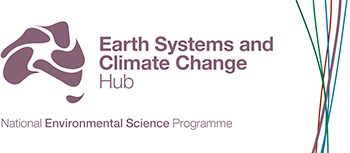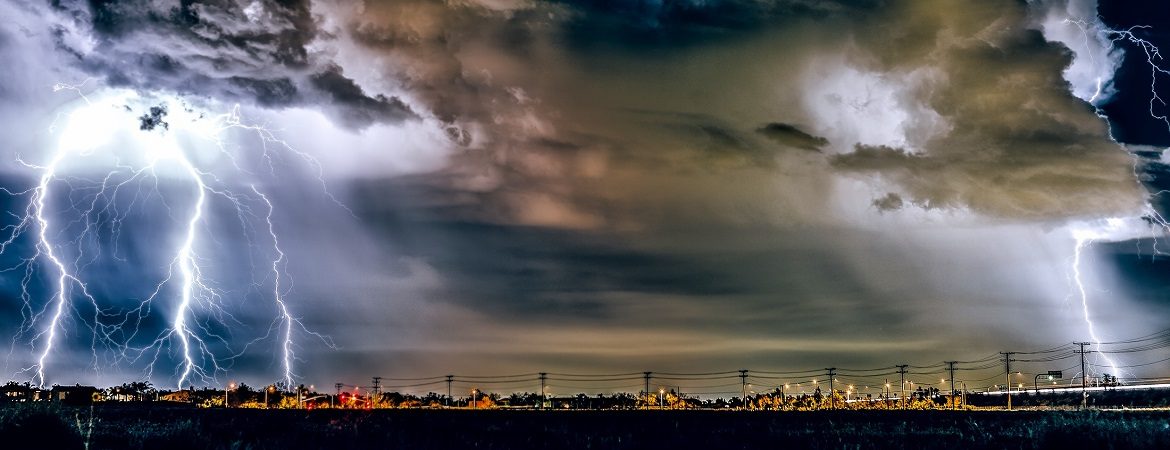PROJECT 5.5: Extreme weather hazards in a changing climate
Changes in the intensity and frequency of extreme and hazardous weather events are visible impacts of climate change currently experienced across much of Australia. These events often have important consequences for infrastructure, energy, health and ecosystems. The costs associated with extreme weather hazards and disasters are likely to change in the future as the climate continues to warm.
We’ve used observational data, climate models and statistical approaches to improve our understanding of current and future changes to extreme weather hazards and to deliver nationally significant knowledge products on current and future natural hazards. We’ve focus specifically on tropical cyclones, bushfires, thunderstorms, east coast lows and the extreme weather hazards they can produce.
We’ve also consulted directly with stakeholders to ensure our information and knowledge products are incorporated and used to inform effective disaster risk policies and management activities. The improved understanding, information and tools on extreme weather hazards have been provided in formats that are relevant for reducing risks to human health, property and the environment in a changing climate.
For more information
Dr Andrew Dowdy, Bureau of Meteorology
Synthesis products:
2021
- Climate Measurement Standards Initiative climate science guidelines: Scenario analysis of climate-related physical risk for buildings and infrastructure. Access the report from the CMSI website.
- Fire-generated thunderstorms and climate change in Australia – outlines recent research conducted under the ESCC Hub on current and future trends of fire-generated thunderstorms.
- Intense east coast lows and climate change in eastern Australia – outlines recent research conducted under the ESCC Hub on current and future trends and impacts of intense east coast lows.
- Tropical cyclones and climate change in the Great Barrier Reef region – outlines recent research conducted under the ESCC Hub on changing tropical cyclone trends in the Great Barrier Reef region.
2019
- Bushfires and climate change in Australia – synthesises knowledge and ESCC Hub research on bushfires in Australia, including how they have changed to date and how they may change in the future under a changing climate.
- Thunderstorms and climate change in Australia – synthesises knowledge and ESCC Hub research on thunderstorms in Australia, including how they have changed to date and how they may change in the future under a changing climate.
- East coast lows and climate change in Australia – synthesises knowledge and ESCC Hub research on east coast lows in Australia, including how they have changed to date and how they may change in the future under a changing climate.
- Tropical cyclones and climate change in Australia – synthesises knowledge and ESCC Hub research on tropical cyclones in Australia, including how they have changed to date and how they may change in the future under a changing climate.
Publications and papers:
- Abram NJ, Henley BJ,Sen Gupta A, Lippmann TJR, Clarke H, Dowdy AJ, Sharples JJ, Nolan RH, Zhang T, Wooster MJ, Wurtzel JB, Meissner KJ, Pitman AJ, Ukkola AM, Murphy BP, Tapper NJ, Boer MM. 2021. Connections of climate change and variability to large and extreme forest fires in southeast Australia, Communications Earth & Environment, 2(8), doi: 10.1038/s43247-020-00065-8 | Full paper
- Bell SS, Chand SS, Turville C. 2020. Projected changes in ENSO driven regional tropical cyclone tracks, Climate Dynamics, 54(3-4), pp. 2533-2559, doi:10.1007/s00382-020-05129-1 | Full paper
- Bell SS, Chand SS, Tory KJ, Ye H, Turville. 2020. North Indian Ocean tropical cyclone activity in CMIP5 experiments: Future projections using a model-independent detection and tracking scheme, International Journal of Climatology, doi: 10.1002/joc.6594 | Abstract
- Catto JL, Dowdy A. 2021. Understanding compound hazards from a weather system perspective. Weather and Climate Extremes, 32, doi:10.1016/j.wace.2021.100313 | Full paper
- Cavicchia L, Pepler A, Dowdy A, Evans J, Di Luca A, Walsh K. 2020. Future changes in the occurrence of hybrid cyclones: The added value of cyclone classification for the east Australian low-pressure systems. Geophysical Research Letters, 47, doi:10.1029/2019GL085751 | Accepted version. An edited version of this paper was published by John Wiley and Sons. Copyright 2020 | Abstract
- Chand SS. 2020. Climate Change Scenarios and Projections for the Pacific (Chapter 3). In Climate Change and Impacts. Springer Nature Switzerland, pp 171-199, doi: 10.1007/978-3-030-32878-8_3 | Book chapter
- Chand SS, Dowdy AJ, Bell SS, Tory K. 2020. A Review of South Pacific Tropical Cyclones: Impacts of Natural Climate Variability and Climate Change (Chapter 6). Climate Change and Impacts in the Pacific. Springer Nature Switzerland, pp 251-273, doi: 10.1007/978-3-030-32878-8_6 | Book chapter
- Di Virgilio G, Evans JP, Blake SAP, Armstrong M, Dowdy AJ, Sharpe J, McRae R. 2019. Climate change increases the potential for extreme wildfires, Geophysical Research Letters, 46, 8517–8526, doi:10.1029/2019GL083699 | Full paper
- Deo A, Chand SS, Ramsay H, Holbrook NJ, McGree S, Magee A, Bell S, Titimaea M, Haruhiru A, Malsale P, Mulitalo S, Daphne A, Prakash B, Vainikolo V, Koshiba S. 2021. Tropical cyclone contribution to extreme rainfall over southwest Pacific Island nations. Climate Dynamics, doi:10.1007/s00382-021-05680-5 | Full paper
- Dowdy AJ. 2020. Climatology of thunderstorms, convective rainfall and dry lightning environments in Australia. Climate Dynamics, doi:10.1007/s00382-020-05167-9 | Full paper
- Dowdy AJ. 2020. Seamless climate change projections and seasonal predictions for bushfires in Australia. Journal of Southern Hemisphere Earth Systems Science, 70(1), pp.120-138. doi:10.1071/ES20001 | Full paper
- Dowdy AJ, Soderholm J, Brook J, Brown A, McGowan H. 2020. Quantifying hail and lightning risk factors using long‐term observations around Australia. Journal of Geophysical Research: Atmospheres, doi:10.1029/2020JD033101 | Full paper
- Earth Systems and Climate Change Hub. 2020. Scenario analysis of climate-related physical risk for buildings and infrastructure: climate science guidance. Technical report by the National Environmental Science Program (NESP) Earth Systems and Climate Change Science (ESCC) Hub for the Climate Measurement Standards Initiative, ESCC Hub Report No.21. Full report and related summary reports [Case study 5.6]
- Lim EP, Hendon H, Boschat G, Hudson H, Thompson D, Dowdy A, Arblaster J 2019. Australian hot and dry extremes induced by weakenings of the stratospheric polar vortex, Nature, 12, 896–901, doi: 10.1038/s41561-019-0456-x | Abstract
- Lin II, Camargo SJ, Patricola CM, Boucharel J, Chand SS, Klotzbach P, Chan JCL, Wang B, Chang P, Li T, Jin FF. 2020. ENSO and Tropical Cyclones (Chapter 17). In El Niño Southern Oscillation in a Changing Climate. (McPhaden M, Santoso A, Cai W. (Eds.), American Geophysical Union, Wiley. | Publication November 2020 | Visit publisher
- Pepler A. 2020. Record lack of cyclones in southern Australia during 2019. Geophysical Research Letters, 47, doi: 10.1029/2020GL088488 | Abstract
- Pepler A and Dowdy A. 2020. A Three-Dimensional Perspective on Extratropical Cyclone Impacts. Journal of Climate., Vol 33, doi: 10.1175/JCLI-D-19-0445.1 | Full paper
- Pepler A and Dowdy A. 2021. Fewer deep cyclones projected for the midlatitudes in a warming climate, but with more intense rainfall. Environmental Research Letters, doi:10.1088/1748-9326/abf528 | Full paper
- Pepler A and Dowdy A. 2021. Intense east coast lows and associated rainfall in eastern Australia. Journal of Southern Hemisphere Earth Systems Science, 71(1), doi: 10.1071/ES20013 | Full paper
- Raavi PH and Walsh KJE. 2020. Sensitivity of tropical cyclone formation to resolution-dependent and independent tracking schemes in high-resolution climate model simulations. Earth and Space Science Journal, 7 (3), doi:10.1029/2019EA000906 | Full paper
- Ramsay HA, Singh MS, Chavas DR. 2020. Response of tropical cyclone formation and intensification rates to climate warming in idealized simulations. Journal of Advances in Modeling Earth Systems, 12(10), doi:10.1029/2020MS002086 | Full paper
- Tory KJ and Kepert JD. 2020.Pyrocumulonimbus Firepower Threshold: Assessing the Atmospheric Potential for pyroCb. Weather and forecasting. pp. 439–456, doi:10.1175/WAF | Full paper
- Vaughan A, Walsh KJE, Kepert JD. 2020. The stationary banding complex and secondary eyewall formation in tropical cyclones. JGR Atmospheres, 125(6), doi:10.1029/2019JD031515 | Full paper
- Warren RA, Ramsay HA, Siems ST, et al. 2020. Radar‐based climatology of damaging hailstorms in Brisbane and Sydney, Australia. Q J R Meteorol Soc., 146: 505– 530, doi: 10.1002/qj.3693 | Full paper
This project is contributing to the following climate challenges:
Our research will provide information and tools to inform updated operating and maintenance standards for infrastructure, and reduce the risks to human health, property and the environment.
Our research will provide information and tools for use in decision making in relation to the influence of climate change on extreme weather events and their associated impacts on food security, ecosystems and natural resource management.
Improved information on extreme weather hazards will enhance our ability to provide coastal planners with the information they need to make informed coastal planning and management decisions.




